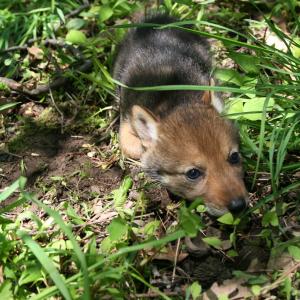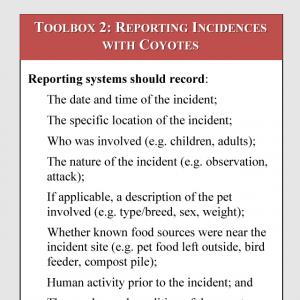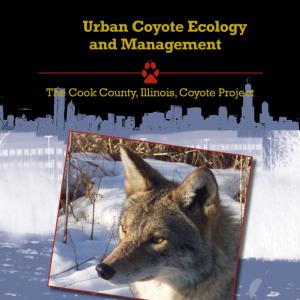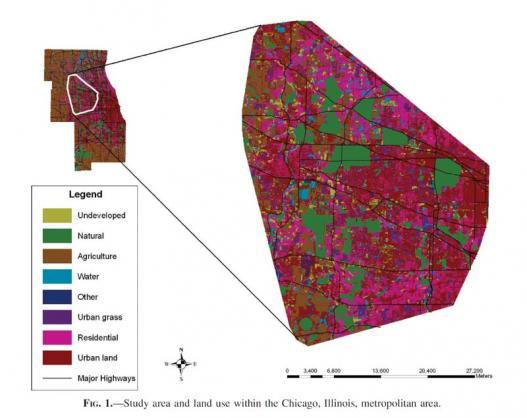
Land use within the Chicago metropolitan area
Study Area: Cook County and the Chicago metropolitan area, IL
The Chicago metropolitan area spans all or parts of six counties in northeastern Illinois (Cook, DuPage, Kane, Lake, McHenry, and Will), and extends into parts of Wisconsin and Indiana. These six counties include greater than 260 municipalities and a cumulative human population exceeding nine million, making this one of the most heavily urbanized areas in North America.
General land cover for this area was previously estimated to be 33% agriculture, 30% urban, 16% natural areas, and 21% unassociated vegetation. Natural areas in the Chicago metropolitan area consisted of savannas, woodlands, grasslands and wetlands. These areas have become fragmented, first by agriculture in the 1800's, and more recently through urbanization. An important feature of the Chicago metropolitan landscape is the patchwork of habitat fragments protected from development, much of which are county forest preserves. In Cook County, forest preserves make up 11% of the land area, providing an important component of the landscape mosaic in addition to the greater than five million human inhabitants in that county. Our fieldwork is largely focused in the northwestern portion of the metropolitan area, including O’Hare International Airport.
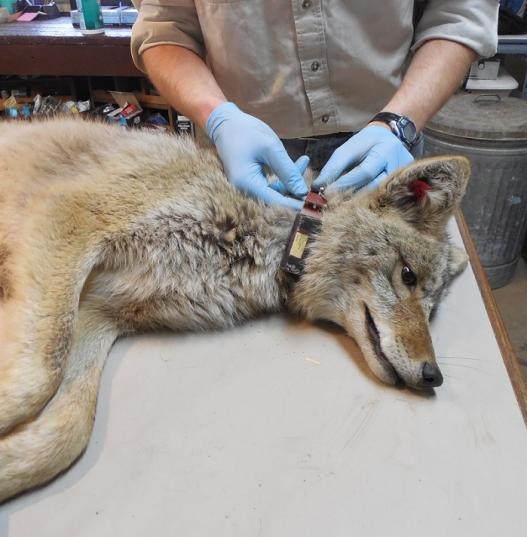
Putting on a VHF radio-collar
Methods: capture and collaring
As part of this research, coyotes are live-trapped and radio-collared in order to identify and monitor their home ranges, the area where a coyote lives and travels daily. Only humane traps are used and researchers are very cautious about when and where traps are placed. Coyotes are released in the exact same location where they are captured. The Cook County Coyote Project researchers have tagged over 1,000 coyotes and radio-collared over 440 so far, making this the largest urban study of coyotes in the world. Over 100,000 locations have been documented for collared coyotes, allowing a sneak peek into their hidden lives.
Locations for collared coyotes are obtained either by using triangulation with a truck-mounted antenna, by using GPS-logging collars, or by direct visual observations. Coyotes are located once during the day, typically one or two times per week, and at night during tracking shifts in which we focus on a group of coyotes and obtain sequential locations at 60-minute to 120-minute intervals for five to six hours during overnight hours. This means that the research staff is always working night and day to track coyotes to best understand their habits. Many maps are presented throughout this website which show telemetry locations; each dot on a map represents a location for that animal.
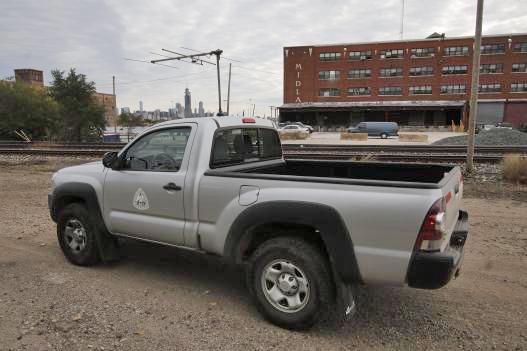
You may see these trucks around town tracking coyotes
While in hand, coyotes are evaluated for their overall health condition. Basic biometric data is collected (weight and other measurements) and blood is drawn for later disease analysis. Besides collars, ear tags are also applied (yellow for females, red for males); ear tags have unique numbers that further help us identify individuals in the field.
In addition to trapping adult coyotes, pups are marked from natal dens during the spring. Pups are weighed, sexed, and a microchip is placed under the skin for future identification in case they are captured again. Blood or hair samples are collected for genetic analysis. Tagging pups provides a big-picture view of the population, especially when those animals can be tracked for their entire life. Handling pups for the short-time it takes to collect data does not disrupt parental bonds, however, all animals, whether adult or pup, are always returned to their original habitat and left alone as quickly as possible. Pup research has been featured on several news channels, including "Howl City."
If you find a den, please do not attempt to investigate or handle pups.
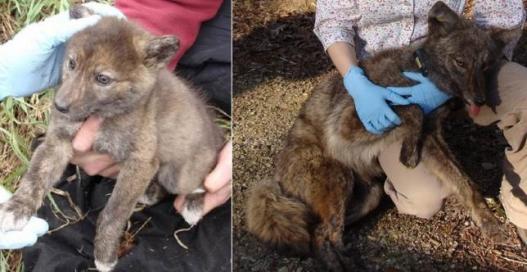
Coyote 551 as a young pup in 2011; 551 growing up in 2012 (anesthetized for evaluation)
Application - how the results are to be used
Results from this unique project are used to answer common questions regarding coyotes in urban areas, with many aspects of coyote ecology having direct management implications. Although this study is focused in Cook County, Illinois, what we have learned about coyotes and people living together are indicative of many metropolitan areas. One of the research team's primary goals is making this project information available for the general public to use, not just wildlife managers. Research provided through this website may help you troubleshoot issues or understand behaviors of the coyotes in your own neighborhood.

